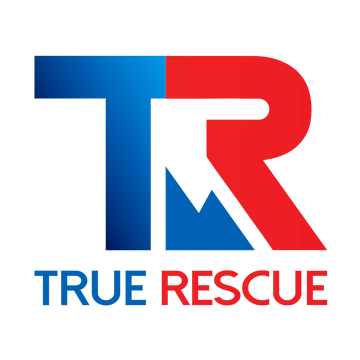FAQ
General Questions
What is a bleeding control kit or trauma kit?
A bleeding control kit (also sometimes called a trauma or tourniquet kit) contains tools and supplies to manage severe traumatic bleeding, including items like tourniquets, hemostatic dressings, gloves, and bandages. As it is designed specifically for life threatening bleeding, it does not include many items typically found in a first aid kit for more minor issues, such as small bandages for minor cuts and scrapes.
What’s the difference between a bleeding control kit and a STOP THE BLEED kit?
A STOP THE BLEED® kit is functionally the same as a bleeding control kit, however, it must adhere to specific guidelines set by the American College of Surgeons Committee on Trauma (ACS COT), and be officially licensed by the Department of Homeland Security’s STOP THE BLEED®. The guidelines and license ensure the kit contains standardized, evidence-based components necessary to empower bystanders to effectively respond to bleeding emergencies.
While all STOP THE BLEED® kits are bleeding control kits, not all bleeding control kits meet the official ACS COT standards required for a Stop the Bleed® designation. If you're purchasing a kit, it's important to confirm whether it meets these specific guidelines, especially if it’s for compliance with legislative or organizational requirements.
What’s the difference between a bleeding control kit/STOP THE BLEED Kit and a first aid kit?
A first aid kit handles minor injuries like cuts or sprains, while a bleeding control kit & STOP THE BLEED kit is designed specifically for life-threatening hemorrhages, including those caused by accidents or trauma.
Who should have a bleeding control kit?
Bleeding control kits are essential for schools, workplaces, public venues, first responders, and anyone trained in basic bleeding control techniques.
Contents and Usage
What is included in a bleeding control kit?
Typical items include a tourniquet, wound packing gauze, emergency trauma dressing (ETD), gloves, trauma shears, and an instruction card. Additional components such as chest seals and hemostatic dressings are included in more advanced kits.
How do I know when to use a tourniquet?
Use a tourniquet when bleeding is severe and cannot be controlled with direct pressure or wound packing.
Can anyone use a bleeding control kit?
Yes, these kits are designed for use by both trained and untrained individuals, with step-by-step instructions provided.
What is hemostatic gauze, and how does it work?
Hemostatic gauze is infused with a clotting agent that helps stop bleeding quickly when applied to a wound.
Are your bleeding control kits reusable?
No, most components, such as gauze and tourniquets, are single-use to ensure sterility and effectiveness.
Legal and Compliance Questions
Are bleeding control kits required in public spaces?
In some states, legislation mandates bleeding control kits in schools, public buildings, or high-occupancy venues. Each year more States are adding legislation addressing the need for bleeding control kits in certain venues.
Does my state have laws about bleeding control kits?
Legislation varies by state. Check your state’s regulations here to confirm requirements for bleeding control kits.
Am I potentially liable if I try to help someone? What if I haven’t been trained?
Most states have “Good Samaritan” laws that protect individuals who act in good faith to provide emergency care, meaning you are unlikely to face legal consequences if you try to help someone bleeding, even if you lack training. These laws generally shield individuals from civil lawsuits when they attempt to provide emergency care in good faith, even if they are not medical professionals.
Kit Storage & Maintenance
How should I store my bleeding control kit(s)?
Store single kits in a cool, dry place that's easily accessible during emergencies. For multiple kits, we recommend a dedicated storage solution such as a wall mounted bleeding control cabinet or carry case.
Do my kits need to be regularly inspected?
While only some States have specific inspection requirements in place, implementing some sort of inspection program with a minimum of annual increments is important and recommended, as many kits include components that do expire. Many organizations will include bleeding control kits in their existing inspection program along with other products such as AEDs, First Aid kits, or Fire Extinguishers, for which they already have a program in place. We also have inspection tags for purchase that can be placed with kits and used for routine inspection documentation.
Do your kits have an expiration date?
The only components in our kits with expiration dates are chest seals & hemostatic dressings. They have a typical shelf life of 3-5 years.
How do I replace expired items in my kit?
You can purchase replacements for components with an expiration date (such as chest seals & hemostatic dressings) on our trauma kits page.
Training
Do I need to be trained to use any of your kits?
While training is recommended for effective use, our kits include simple instructions to guide untrained bystanders in an emergency.
Do you offer STOP THE BLEED training?
We do however offer bleeding control training products here.
Where can I receive training?
For online training, there are many free training resources, including step by step videos. One such training video can be accessed here. For in person instruction many first aid and CPR training companies now offer STOP THE BLEED training. We recommend checking with your nearest local training company for group training.
